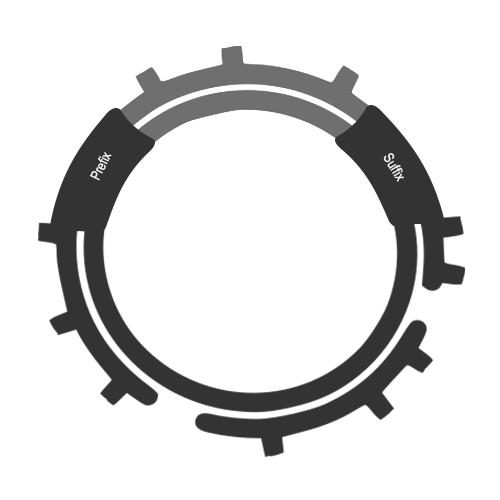Contents
Basic and Composite parts
BBa_K2095000 - LIP promoter
This basic part consists of a synthesized truncated version of the promotor of the light-inducible protein gene (LIP) in Dunaliella microalgae. Activation of the promoter has shown to be stimulated by high intensity light when introduced into Chlamydomonas Reinhardtii (1, 2).
In 2013, Park S. et al. investigated the promoter of the highly inducible promoter gene (LIP) of the marine algae Dunaliella sp.(1). They discovered several light-responsive motifs by experimenting with truncations of the promotor fused with a Renilla luciferase gene introduced in C. reinhardtii. In a more recent study from 2016, they identified sequences over-represented in light-inducible promoters (SORLIP)(2). Duplication of the SORLIP sequence upstream a 100 bp truncation of the LIP promoter showed promising results in activity when stimulated by high- and medium-intensity light. Therefore, we decided to use the 2xSORLIP promotor sequence when designing this BioBrick. In our project, the intention of this BioBrick was to accomplish the inducible expression of Cas9 in C. reinhardtii.
To verify the functionality of the pLIP BioBrick we created BBa_K2095000, coupling the promoter to a reporter gene enabling measurement of its activity.
BBa_K2095003 - mRFP1 under controll of LIP promoter
This composite part was designed by the Linkoping iGEM team 2016 to demonstrate the functionality of the light-inducible promoter, LIP, Biobrick (BBa_K2095000)
A synthesized truncated version of the promotor of the light-inducible protein gene (LIP) in Dunaliella microalgae (1,2) was set to control the expression of the mRFP1 reporter gene, obtained from BBa_E1010. This part is terminated by a RuBisCO 3'UTR (BBa_K2095002).
The part was created to evaluate function and potential leakage of LIP in C. reinhardtii. To provide this information, we planned to perform experiments in successfully transformed algae. This by measuring the RFP expression in transformed algae, stimulated by light of different intensities, compared to algae grown in complete darkness. Unfortunately, the transformation of this part into C. reinhardtii failed, and no results on BBa_K2095000 functionality were provided.
BBa_K2095002 - RBCS2 terminator
Chlamydomonas reinhardtii RuBisCO small subunit 2 terminators obtained from the pOpt_mVenus_Hyg expression plasmid provided by Chlamydomonas Resource Center, originating from studies performed by Lauersen et. al. (4). An intron was added upstream the terminator, originating from the same expression plasmid.
References
1. Park S, Lee Y, Lee J-H, Jin E. Expression of the high light-inducible Dunaliella LIP promoter in Chlamydomonas reinhardtii. Planta [Internet]. 2013 Dec [cited 2016 Sep 4];238(6):1147–56. Available from: http://www.ncbi.nlm.nih.gov/pubmed/24043576
2. Baek K, Lee Y, Nam O, Park S, Sim SJ, Jin E. Introducing Dunaliella LIP promoter containing light-inducible motifs improves transgenic expression in Chlamydomonas reinhardtii. Biotechnol J. 2016;11(3):384–92.
3. IDT. CRISPR/Cas9 editing: transfection of gBlocks® Gene Fragments that encode sgRNAs. 2015 [cited 2016 Oct 7];4. Available from: http://eu.idtdna.com/pages/docs/default-source/user-guides-and-protocols/gblocks-gene-fragment-transfection.pdf?sfvrsn=6
4. Lauersen KJ, Kruse O, Mussgnug JH. Targeted expression of nuclear transgenes in Chlamydomonas reinhardtii with a versatile, modular vector toolkit. Appl Microbiol Biotechnol [Internet]. 2015 Apr [cited 2016 Sep 4];99(8):3491–503. Available from: http://www.ncbi.nlm.nih.gov/pubmed/25586579












